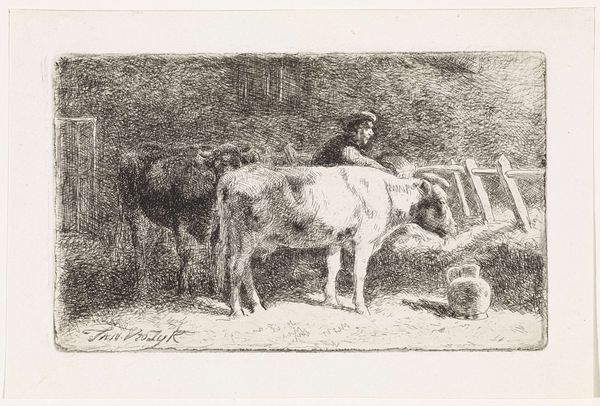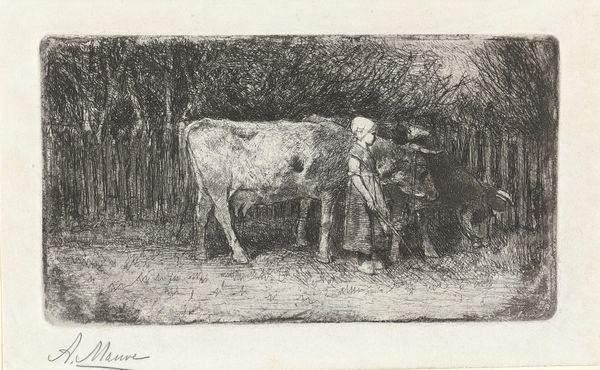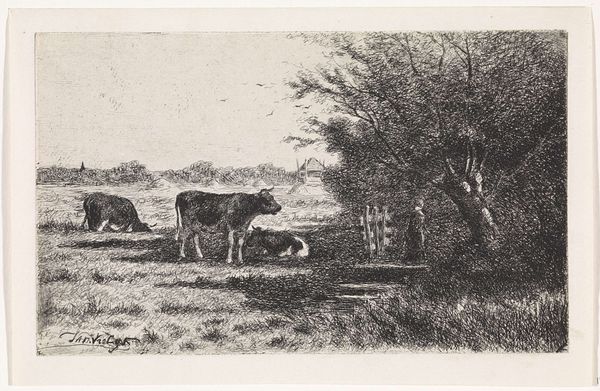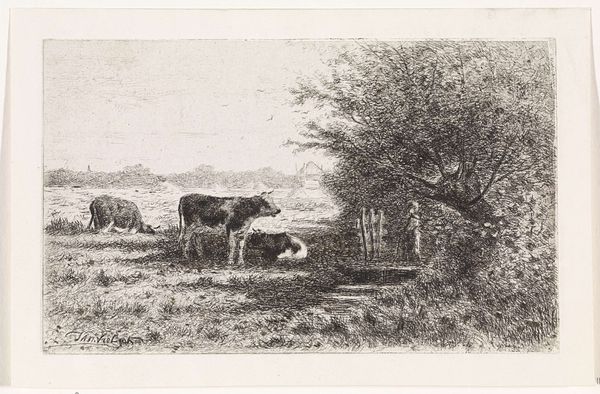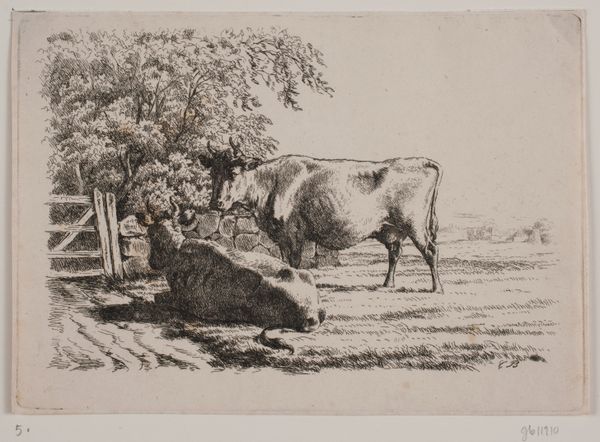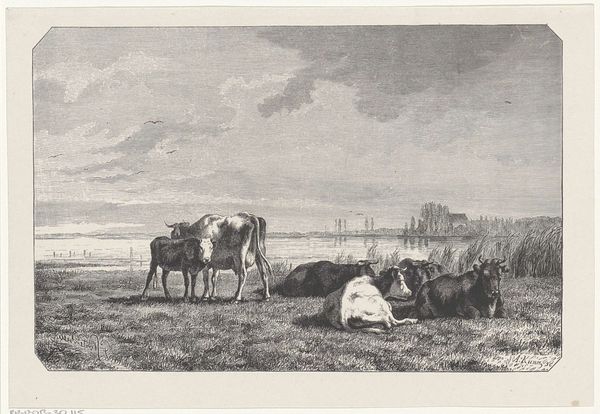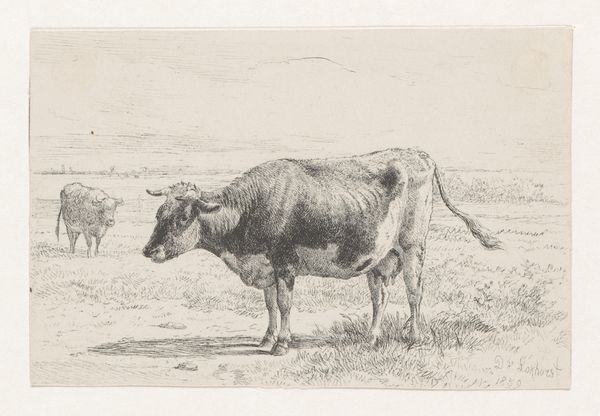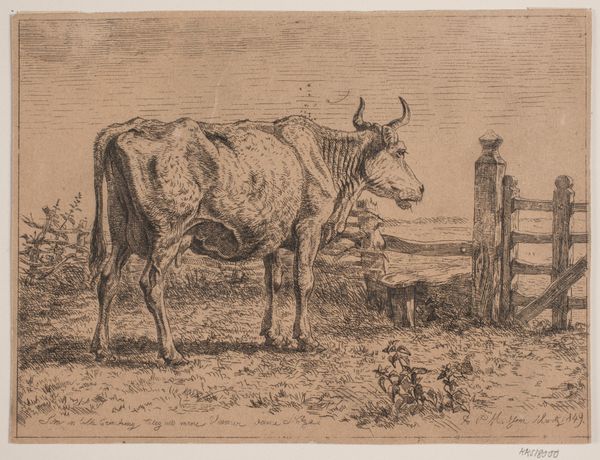
print, etching, engraving
#
dutch-golden-age
# print
#
etching
#
landscape
#
figuration
#
genre-painting
#
engraving
#
realism
Dimensions: height 148 mm, width 239 mm
Copyright: Rijks Museum: Open Domain
Editor: Here we have Jan Vrolijk's etching and engraving, "Boer met twee koeien in een landschap," made sometime between 1860 and 1894. I find it interesting how it captures a very ordinary scene. What stands out to you about this print? Curator: Well, looking at this work, I'm struck by the stark realism, seemingly simple, yet deeply embedded within layers of social commentary. The print depicts a farmer with two cows, and it invites us to think critically about land ownership, labor, and the role of agriculture in shaping social structures. Considering the date, we can look at how industrialization impacted rural communities during that time. What might this seemingly quiet scene reveal about broader historical power dynamics? Editor: I hadn’t thought of it in that way. I just saw the beauty in the mundane, the quiet life. Curator: Precisely! It is beautiful, but let's dig deeper. Think about the perspective from which this work is presented. Who does it serve? Is it glorifying rural life, or perhaps hinting at the exploitation inherent in agricultural labor? Does this resonate with other works you've encountered exploring class disparities or agrarian reform? Editor: It makes me think about how romanticized images of farm life often erase the harsh realities faced by farmers. This makes me want to reconsider what artists were trying to say about laborers through their works. Curator: Exactly! By examining the intersections of art, history, and social justice, we gain a more comprehensive understanding of our world and the forces that shape it. Editor: Thank you. I will never be able to look at simple images like that the same way. Curator: Wonderful! Now let's think about how these prints were circulated and consumed by different audiences...
Comments
No comments
Be the first to comment and join the conversation on the ultimate creative platform.

